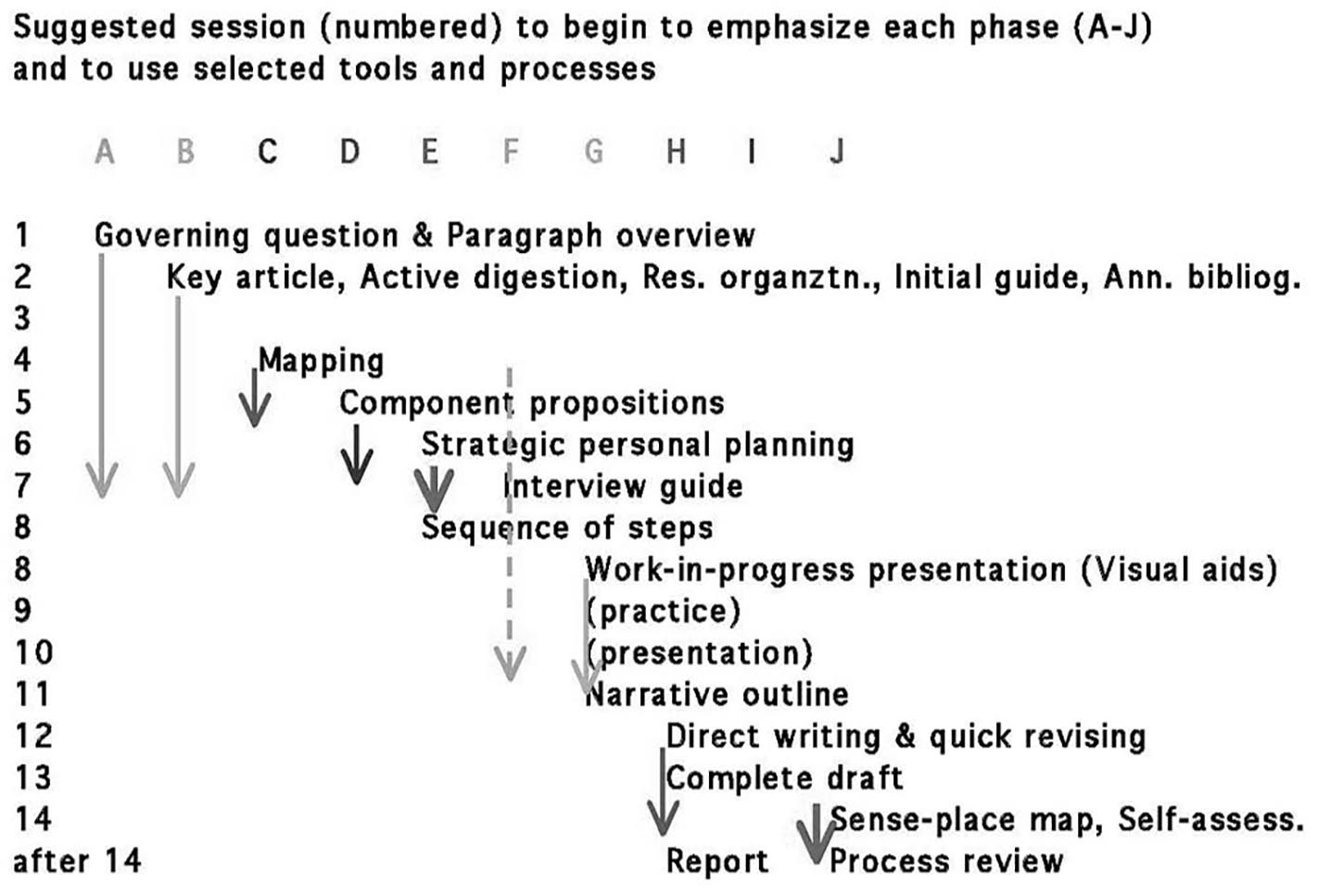PHASES of RESEARCH and ENGAGEMENT
The Phases framework emphasizes research and writing that prepares you to communicate with an audience. A complementary framework is the Cycles and Epicycles of Action Research, which emphasizes reflection and dialogue through which you build a constituency around some course of action. However, the distinction between the two kinds of research is not sharp. When following one of the two frameworks, you may find yourself borrowing tools introduced under the other. You should feel free to develop your own synthesis of the frameworks. After all, Action Research builds from knowledge about the impact of actions that others have already taken and about the broader background for those actions. To gain this knowledge you need a systematic approach for your inquiries, such as moving through the phases of research. At the same time, research and writing under the Phases framework is directed towards influencing an audience about an issue that engages you. In these senses—influencing others or being engaged yourself—action is already in the picture.Each Phase of Research and Engagement is defined by a distinct goal, stated in the first person below. (The goals of the Phases are complemented by the goals of developing as a Reflective Practitioner that apply through the whole project.) Keep in mind, however, that the phases are overlapping and iterative. That is, allow yourself to revisit a phase later in light of the following:
Later phases (especially, F and I) may be started early if opportunities arise during your particular project. In general, however, because each phase builds on the ones before, it is best to start them in the order given. Moving through the sequence of phases below and allowing for iterative development should help you reflect on any prior conceptions of what you thought you ought to be doing and home in on a research project in which you are taking your personal and professional aspirations seriously.
As indicated in the chart at the end, the tools and processes introduced under each phase are organized in relation to fourteen sessions, which could be weeks in a semester-long course or fractions of the total time available for the project.
- A. Overall Vision
- Goal: “I can convey who I want to influence or affect concerning what (Subject, Audience, Purpose).”
- B. Background Information
- Goal: “I know what others have done before, either in the form of writing or action, that informs and connects with my project, and I know what others are doing now.”
- C. Possible Directions and Priorities
- Goal: “I have teased out my vision, so as to expand my view of issues associated with the project, expose possible new directions, clarify direction or scope within the larger set of issues, and decide the most important direction.”
- D. Component Propositions
- Goal: “I have identified the premises and propositions that my project depends on, and can state counter-propositions. I have taken stock of the thinking and research I need to do to counter those counter-propositions or to revise my own propositions.”
- E. Design of Further Research and Engagement
- Goal: “I have clear objectives with respect to product—both written and practice—and process—including my personal development as a reflective practitioner. I have arranged my work in a sequence (with realistic deadlines) to realize these objectives.”
- F. Direct Information, Models and Experience
- Goal: “I have gained direct information, models, and experience not readily available from other sources.”
- G. Clarification through Communication
- Goal: “I have clarified the overall progression or argument underlying my research and the written reports.”
- H. Compelling Communication
- Goal: “My writing and other products grab the attention of the readers or audience, orient them, move them along in steps, so they appreciate the position I've led them to.”
- I. Engagement with Others
- Goal: “I have facilitated new avenues of classroom, workplace, and public participation.”
- J. Taking Stock
- Goal: “To feed into my future learning and other work, I have taken stock of what has been working well and what needs changing.”
Phases of Research and Engagement: syllabus, http://www.cct.umb.edu/courses.html#692; examples of student assignments, http://www.faculty.umb.edu/peter_taylor/692Examples.html (viewed 10 Oct 2018).

Suggested pacing for moving through the phases